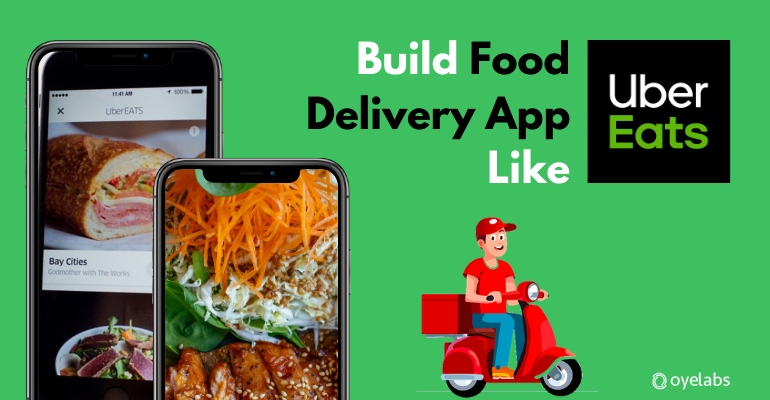
The food service sector has experienced explosive growth in the past few years, driven by growing demand for effortless on-demand services. With platforms such as UberEats and DoorDash transforming the way consumers order food, the emphasis has shifted to creating innovative food delivery apps. These apps offer customers the ability to order food from their preferred restaurants and have it brought right to their location. For companies, the task is to leverage technology to enhance delivery logistics and guarantee a seamless customer experience.
Building the Perfect Food Delivery App
Creating a successful food delivery app requires a thorough understanding of the market trends and operational strategies that dominate the sector. Whether building a full-stack delivery solution or focusing on niche markets like ghost kitchens or cloud kitchens, the app’s functionality must to serve to both customers and restaurants. Key features such as real-time order monitoring, delivery time optimization, and user satisfaction metrics play a critical role in ensuring customer loyalty.
Restaurant Delivery Partnerships: A Winning Strategy
Restaurants are increasingly forming collaborations with delivery platforms to increase their market penetration. These agreements assist restaurants cater to a larger audience while minimizing the obstacles of managing their in-house delivery operations. The success of such collaborations hinges upon technological synchronization, which enhances the user interface design and improves the customer experience. Through these collaborations, restaurants can increase customer loyalty and make sure that they remain relevant in a saturated market.
How KPIs Drive Food Delivery Profitability
For any business, knowing its performance metrics is essential to ensuring profitability. In the food delivery sector, KPIs such as delivery time, precision in orders, and user happiness are essential. Measuring and improving these KPIs allows delivery services to provide a superior customer experience. Moreover, keeping an focus on profitability helps companies streamline operations, reduce charges, and improve overall efficiency.
Customer Satisfaction and User Retention Strategies
A major factor in the growth of delivery apps is their capacity to retain users through excellent customer service. Providing fast food delivery and addressing customer reviews swiftly can help companies improve their service offerings. In addition, introducing loyalty programs and offering incentives like no-cost delivery can enhance Explore the Options customer loyalty. User happiness can be further strengthened by maintaining food quality control and providing a seamless order management system.
The Role of Technology in Food Delivery
Innovative solutions is at the heart of modern food delivery services, helping companies refine their operations and provide a seamless customer experience. From mobile app development to real-time order monitoring, tech integration has a significant role in the success of delivery platforms. The application of data analytics to understand user profiles and preferences allows delivery services to offer customized experiences, further enhancing user engagement.
Competitive Analysis in the Food Delivery Market
The delivery sector is highly competitive, with many players vying for market share. Conducting a market evaluation allows companies to assess their standing in the market and identify chances for expansion. Delivery platforms must differentiate themselves by providing distinctive features such as ghost kitchen services, quick service, or niche cuisine options. Analyzing market share and consumer behavior empowers companies to tailor their services and stay ahead of the competition.
The Impact of the Pandemic on Food Delivery Services
The global health crisis has had a substantial impact on the food delivery industry, accelerating its expansion as more people turned to delivery services due to social distancing guidelines. The shift has highlighted the importance of technological evolution in the culinary sector, with restaurants quickly adopting online food ordering and delivery apps. As the world adapts to new normals, delivery services must persist in innovating to satisfy evolving consumer demands and ensure business growth.
Investing in Food Delivery Startups
The food delivery industry presents numerous startup opportunities, with investors keen on backing companies that offer innovative solutions. From creating UberEats clones to developing niche delivery apps, business owners have a range of paths to pursue. Investors seek out strong operation plans and the capacity to scale, particularly in areas like system efficiency, customer interface, and technological advancement. By concentrating on these sectors, startups can attract significant investments and gain a foothold in the industry.
Enhancing Food Delivery Service Profitability and Expansion
Growing a food delivery service requires a strong base built on market penetration, cost models, and service differentiation. As local delivery services grow, businesses should concentrate on creating a dependable logistical system and ensuring quality standards. In addition, widening the menu offerings, forming new restaurant partnerships, and adopting advanced tech solutions in food delivery will propel further growth. By continually enhancing delivery times and ensuring high customer satisfaction, companies Mobile Delivery Technology can sustain a market lead and increase revenue generation.
These topics offer a comprehensive understanding of the service landscape, with a focus on key aspects that drive the market forward. Whether whether you are a startup or an experienced company, focusing on these factors will help you thrive in the competitive world of food delivery.